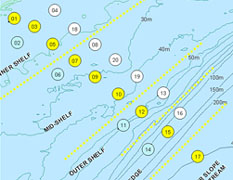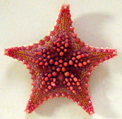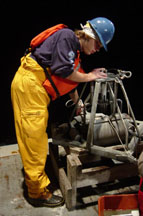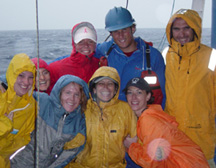Transect
Program Overview
Undergraduate
and graduate students have conducted oceanographic research at
sea and in the laboratory.
|
Shipboard Operations (Leg 05)
Students operate a variety of oceanographic instruments during the 5-day cruise component of the program. |
Map
of the Charleston Transect
The
20 oceanographic sampling stations of the Charleston Transect cross
the continental shelf off the coast of Charleston, SC. |
GIS
Database (Legs 01-04)
Data
collected during Legs 01- 03 are archived in a GIS database.
(This link will open a separate window.) |
Student
Research Results
(Legs 01-05)
PhotoDocumentaries display student research projects. |
Program Evaluations (Leg 05)
Student responses pre- and post-program . |
Taxonomic
Photo Galleries
Organisms collected were photographed and identified.
These galleries are intended for use as field guides for future
research on the southeast U.S. continental shelf. |
|
Video
Galleries
50
short clips of organisms viewed both on the
seafloor and in the lab.
|
|
Photo
Galleries
- Student
Researchers
- Ship
and Crew
- Sampling Equipment with organisms collected
|
Collaborating
Partners
Several organizations and universities generously contributed resources
and equipment. |
|
|
| |
|
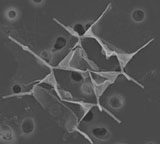 |
| |
| |
The College of Charleston Transect Program Legs 01-04 were funded
by a
National Science Foundation Geoscience Education grant (GEO-0331155).
Additional support was generously provided by the NOAA Coastal Services Center
and the College of Charleston Dept. of Geology and Environmental Geosciences.
Leg 05 was supported by the Cooperative Institute for Ocean Exploration, Research and Technology
(NOAA award # NA09OAR4320073).
Any opinions, findings, and conclusions or recommendations expressed in this
material
are those of the author(s) and do not necessarily reflect the views
of either the
National Science Foundation or the National Oceanic and Atmospheric Administration.

